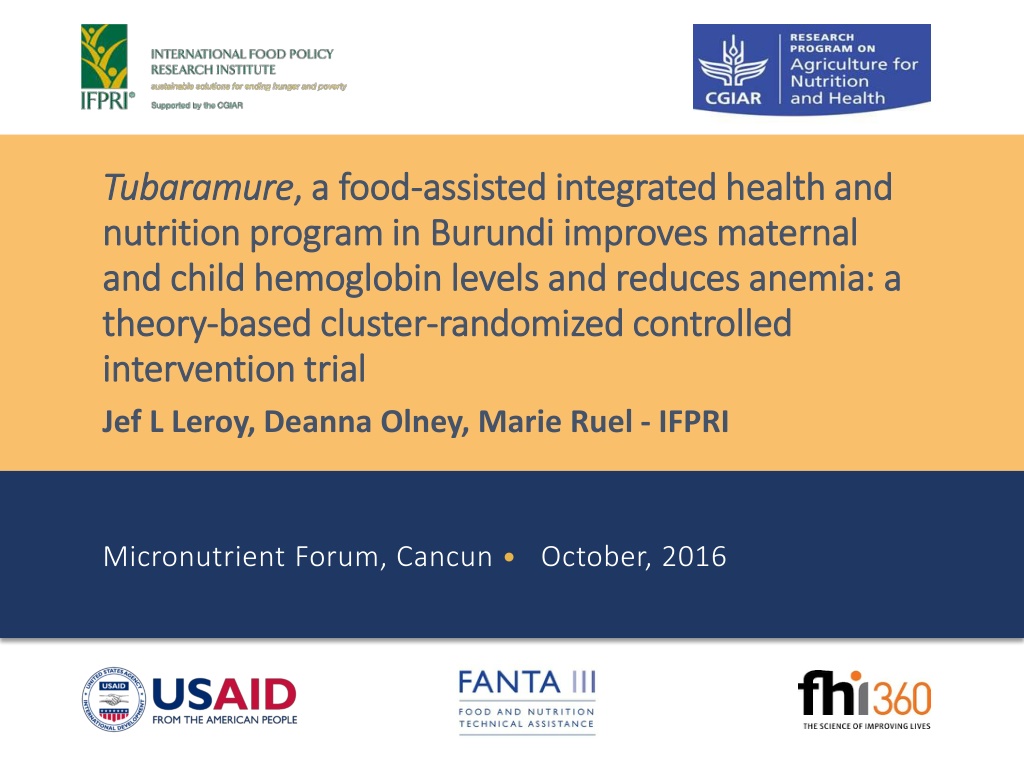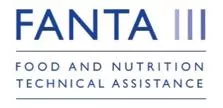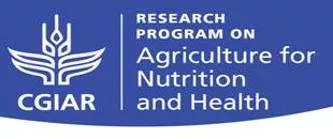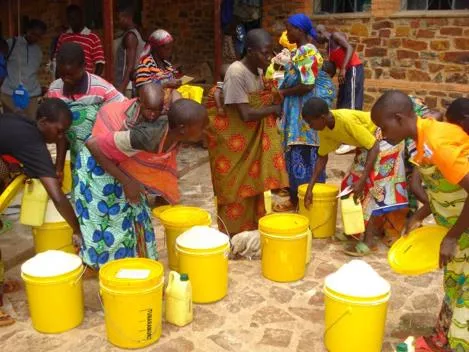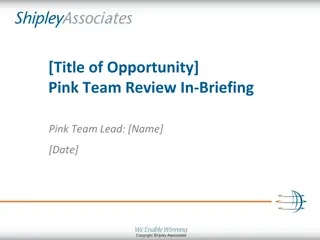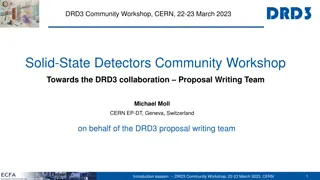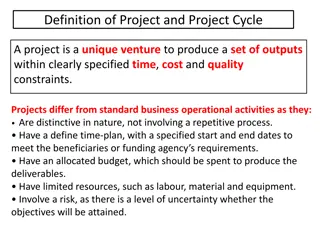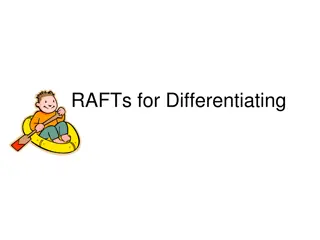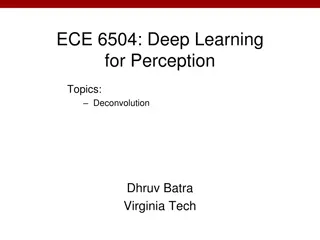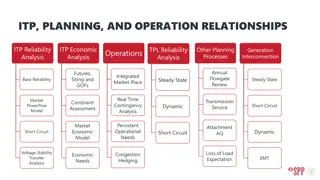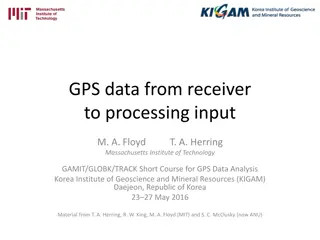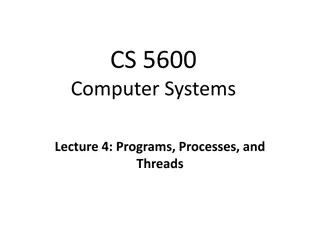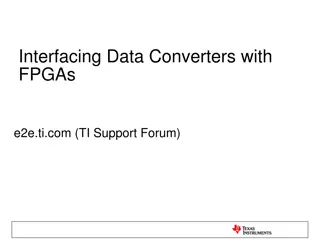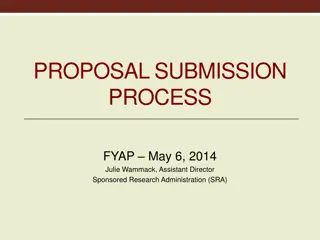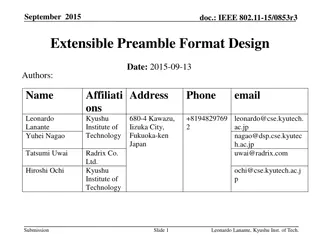ITP 2023 Project Proposal Formats & Guidelines
Engage in the upcoming session to gain insights into the new format for ITP project proposals. Explore FYP2 ambitions, higher education's role in sustainable development, and the integration of Global Citizenship. Get updated on the timeline and what's new for ITP 2023, aligning with the 2030 Agenda for Sustainable Development and VLIR-UOS revised Theory of Change.
Download Presentation

Please find below an Image/Link to download the presentation.
The content on the website is provided AS IS for your information and personal use only. It may not be sold, licensed, or shared on other websites without obtaining consent from the author.If you encounter any issues during the download, it is possible that the publisher has removed the file from their server.
You are allowed to download the files provided on this website for personal or commercial use, subject to the condition that they are used lawfully. All files are the property of their respective owners.
The content on the website is provided AS IS for your information and personal use only. It may not be sold, licensed, or shared on other websites without obtaining consent from the author.
E N D
Presentation Transcript
Tubaramure Tubaramure, a food nutrition program in Burundi improves maternal nutrition program in Burundi improves maternal and child hemoglobin levels and reduces anemia: a and child hemoglobin levels and reduces anemia: a theory theory- -based cluster based cluster- -randomized controlled randomized controlled intervention trial intervention trial Jef L Leroy, Deanna Olney, Marie Ruel - IFPRI , a food- -assisted integrated health and assisted integrated health and Micronutrient Forum, Cancun October, 2016
PM2A Preventing Malnutrition in children under 2 years of Age First 1,000 days Three components: Food rations: Household ration + individual ration (pregnant/lactating woman and child 6-23.9 mo) Health services: Antenatal care, postnatal care, immunizations, micronutrient supplementation, other preventive/curative health and nutrition services Behavior change communication (BCC): Care and feeding practices, hygiene, and health practices Photo credit: Meghan Parker
Background: Burundi Burundi is one of the world s poorest countries (UNDP 2013) 81% of the population lives on < $1.25/day (World Bank, 2011); > 60% is food insecure Region where study was carried out (central-eastern), high stunting (62%) (DHS 2010) Country has been suffering from severe political and economic instability for decades
Background Food-assisted MCHN programs: Widely used in low and middle income countries to alleviate the persistent problems of maternal and child undernutrition. Evidence of their impact on maternal and child health and nutrition outcomes is scant, especially so for anemia. Anemia in Burundi: In 2011 the prevalence of anemia among pregnant women and children under five were estimated at 31 and 47 %, respectively. Given the size of the problem and the multiple causes of anemia that Tubaramure addresses (promotion of bednet use, utilization of health services, provision of CSB, etc.), a reduction of the prevalence of anemia would be expected.
Objectives Estimate the impact of Tubaramure on Hb and anemia among children aged 0 to 23.9 mo and their mothers. Explore the pathways of impact.
Study setting http://upload.wikimedia.org/wikipedia/commons/thumb/2/2f/Burundi_Provinces.png/250px-Burundi_Provinces.png
Intervention package Study Arms 3 Treatment Groups Control Family food ration (monthly) 12.0 CSB, kg 1.2 Vegetable oil, kg Individual food ration (monthly)1 6.0 / 3.0 CSB, kg 0.6 / 0.3 Vegetable oil, kg BCC (care groups; meet twice/month) Yes Access to government health services Yes Yes 1Values are for pregnancy & first 6 mo of lactation / 6 to 23.9 mo old children
Design cRCT with 2 cross-sectional surveys (2010- 2012) Impact analysis: double difference colline- fixed effect model, controlling for potential confounding factors: Controls for possible differences between groups at baseline Standard errors adjusted for clustering.
Analytic approach Step 1: impact on final outcomes of interest Child and maternal Hb and anemia Tubaramure Step 2: impact on intermediary behaviors & practices Intermediary outcomes (diet, bednets, etc) Tubaramure Step 3: dose-response analysis Intermediary outcomes (diet, bednets, etc) Child and maternal Hb and anemia
Baseline characteristics (0-23.9 months) Study arm Full sample 2,622 Treatment Control 1,733 889 N Household Size Head has no education/preschool, % Head farms, % Mother Age, y Has no education/preschool, % Child Age, m Stunted, % Wasted, % 5.6 2.0 40.3 76.3 5.6 2.0 39.6 75.4 5.5 2.0 41.6 78.0 28.6 7.0 51.8 28.7 7.0 50.8 28.3 7.1 53.7 12.8 6.8 53.3 7.2 12.6 6.8 51.8 7.5 13.2 6.8 56.1 6.7 Data are mean SD unless otherwise specified. * Significantly different (p<0.05) between study groups.
Child hemoglobin (0-23.9 months) All 0 to 5.9 mo Impact on Hb (g/dL) 6 to 23.9 mo Unadjusted Hb (g/dL) 11.00 11.0 10.70 10.60 10.60 10.70 10.60 10.20 10.50 10.10 10.30 10.0 9.80 9.70 0.5 0.43 0.38 0.4 0.3 0.2 0.14 0.1 0.0 2010 2012 2010 2012 2010 2012 wave Control Treatment Impact (95% CI)
Child hemoglobin (0-23.9 months) All 0 to 5.9 mo Impact on Hb (g/dL) 6 to 23.9 mo Unadjusted Hb (g/dL) 11.00 11.0 10.70 10.60 10.60 10.70 10.60 10.20 10.50 10.10 10.30 10.0 9.80 9.70 0.5 0.43 * 0.38 * 0.4 0.3 0.2 0.14 0.1 0.0 2010 2012 2010 2012 2010 2012 wave Control Treatment Impact (95% CI) * Different from 0, P<0.05
Other impacts in children (0-23.9 mo) Outcome Infant and young child feeding (last 24 h) Consumed CSB, % Minimum dietary diversity (with CSB), % Minimum dietary diversity (without CSB), % Consumed Fe-rich foods (with CSB), % Consumed Fe-rich foods (without CSB), % Minimum meal frequency, % Bed net use (last 24 h) All, % 0 to 5.9 mo, % 6 to 23.9 mo, % Morbidity (last 2 wk) Any illness, all, % Fever, all, % Impact Significant? 43.5 3.1 11.2 3.7 7.0 4.1 35.0 3.4 2.4 2.6 12.9 3.9 * * * * * 2.2 4.3 23.0 5.9 -2.8 4.4 * -9.4 3.4 -10.8 2.9 * * Data are estimated impact SE
Pathways of impact children(0-23.9 mo) Consumed CSB Minimum dietary diversity Consumed Fe-rich foods PM2A Child hemoglobin Minimum meal frequency Bed net use Illness Fever
Conclusions Using a large scale cluster-randomized controlled effectiveness trial: We demonstrate impact of a food-assisted MCHN program on child and maternal (not shown) hemoglobin and anemia. We demonstrate impact on intermediary variables (diet, morbidity, bed net use), which suggests plausible pathways of impact. Marked increase in anemia (women and children) from baseline to follow-up is of great concern. Findings suggest that food-assisted MCHN programs can protect poor families from economic or health shocks in vulnerable countries such as Burundi.
Acknowledgements The research took place within the USAID FFP-funded Tubaramure program, led by Catholic Relief Services in consortium with Food for the Hungry, International Medical Corps, and Caritas Burundi. We thank the consortium partners for overseeing and implementing the program and for their collaboration with the research teams and processes. Sources of financial support: The study was made possible by the generous support of the American people through the support of the Office of Food for Peace, Bureau for Democracy, Conflict, and Humanitarian Assistance, and the Office of Health, Infectious Diseases, and Nutrition, Bureau for Global Health, U.S. Agency for International Development (USAID), under terms of Cooperative Agreement No. AID-OAA-A-12-00005, through the Food and Nutrition Technical Assistance III Project (FANTA), managed by FHI 360. This study also received support from the CGIAR Research Program on Agriculture for Nutrition and Health (A4NH), led by IFPRI
